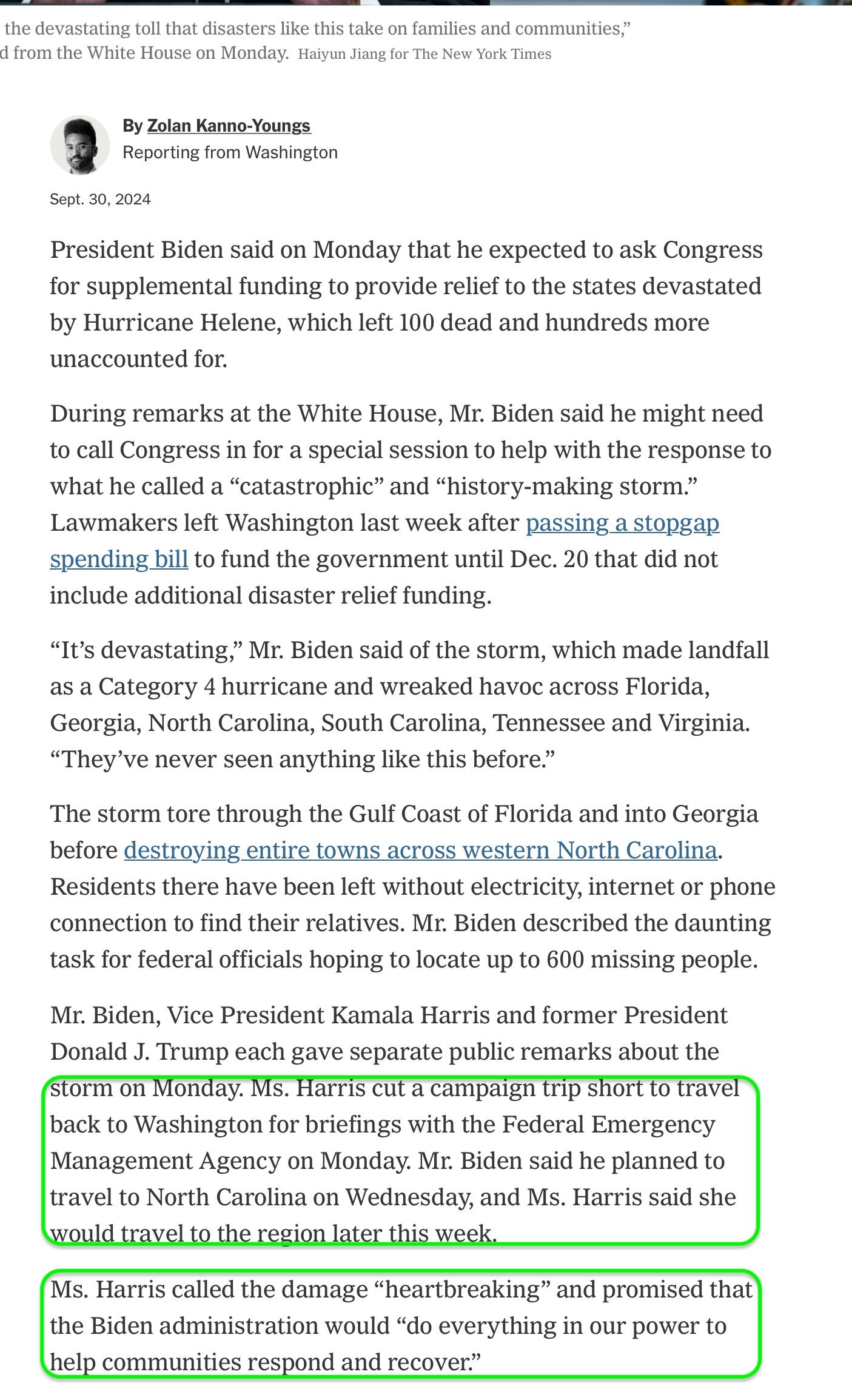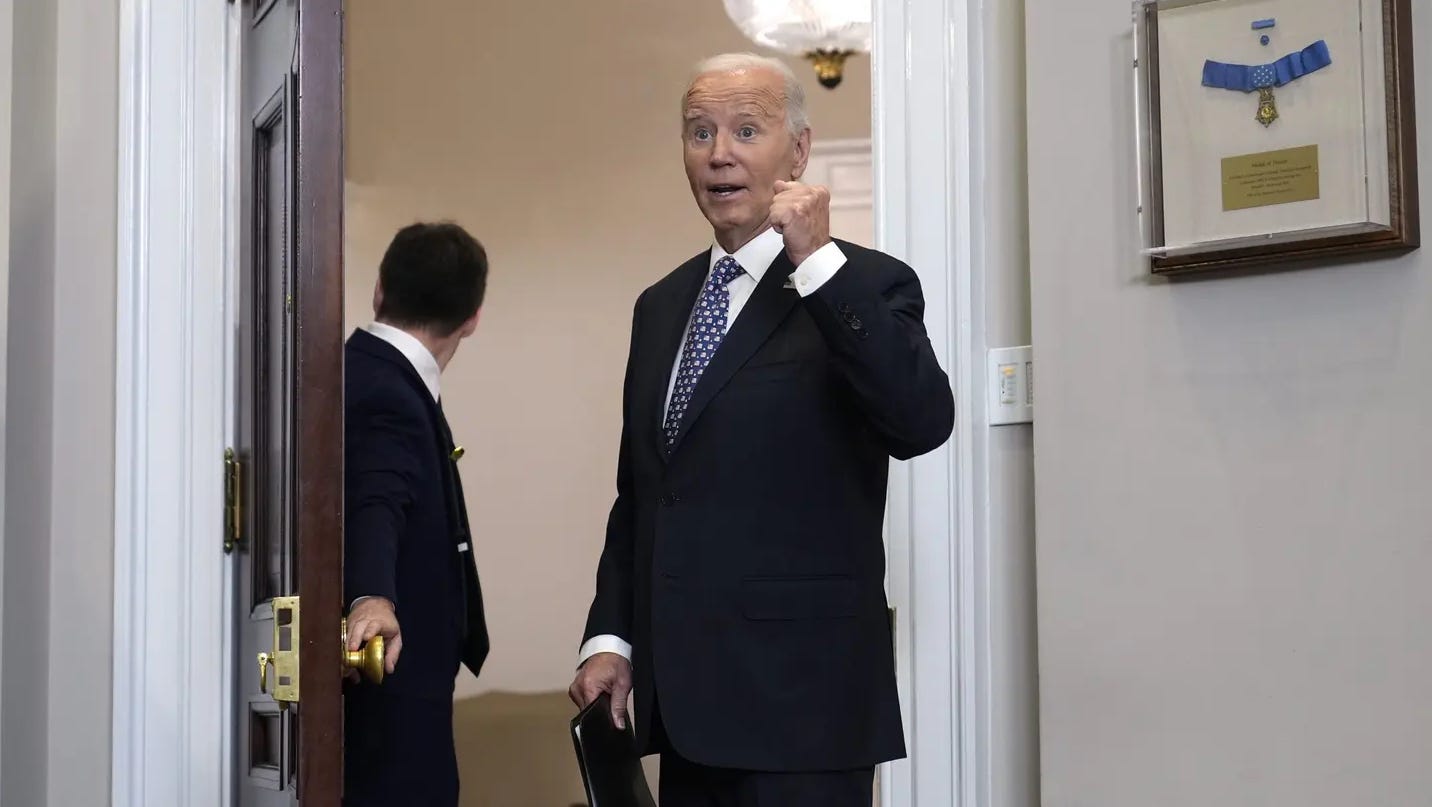Propaganda Example 1: Hurricane Helene Coverage
What you leave out is as important as what you leave in
I talked about how:
So much so we all use propaganda techniques every day, hopefully of the benign kind. But let’s take an example of how propaganda is used in the media, see the techniques used, and use a current story told by two different “sides.”
The story I used today is the U.S. Government’s response to Hurricane Helene a month ago. Such a natural disaster for several U.S. states should be a non-political event, but alas we live in such a stupid tribal era that everything — even the sun rising in the East and setting in the West — must be attributed to either good or evil depending on who is doing it or benefiting from it.
I picked two news sources: the New York Times and Fox News. Why them? Because they are both mainstream, prominent, popular sources of news in the United States, and because they endorsed the opposite person for the Presidency. Thus we can expect that they would try to make their endorsee look good and perhaps the other person look bad. Using propaganda techniques.
The New York Times
Let’s start with the headline:
The headline implies Biden needs Congress to pass an aid bill to add to the relief efforts. This is a technique of reducing blame on his side by pointing out that it is Congress who authorizes spending.
Then comes the article:
So their endorsee, Ms. Harris, is shown taking action in preparation for what she can do when she travels to the affected region. She is described as caring about the people, and determined to do whatever she could.
And here is the picture the New York Times used:
A president in control, surrounded by the trappings of his office.
In summary, the Times article was fairly straightforward in stating what happened without too much embellishment. Only at the end did they make sure to emphasize what their endorsee was going to do in a good light.
Fox News
Let’s start with the headline:
Same event, but this time the president got “defensive” and “testy” and got “pushed” around by reporters.
The article:
The president will visit the affected areas — “but not yet.”
He coughed a lot, and spent the weekend at his beach house. They weren’t in command over the weekend by being in Washington! The reporter had to yell at him!
Only at the end of the article did they report what the president told them at the “start of his remarks” (before any of the questions that followed): He may have been in his beach house, but he was in “constant contact” with local leaders.
And the photo they used:
A slightly surprised, out-of-it elderly man wandering out of the room while giving a fist bump for a natural disaster.
Summary
It’s too easy, really, to find these examples. Just as long as you understand that one news source is trying to elect candidate A and the other news source is trying to elect candidate B, everything follows. Their candidate is forthright and strong, the other candidate is a dithering fool.
Just remember that propaganda is about what you leave out as much as what you put in. I’m sure President Biden said he would do all he could, and I’m also sure he coughed several times. I’m sure he stood resolutely behind the podium with a flag in the background, and I’m also sure he left the room at one point and had his arm raised for one reason or another.
One side showed him heroically and left out the human bits like coughing. The other side pushed the human bits and left out the heroic side. Yet all of it was present that day.
Propaganda is very much about what you leave out as what you say. How a news source covers a story tells you their bias — and they all have bias. And so do we.










